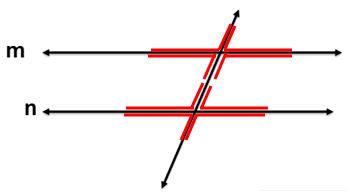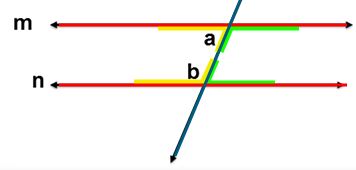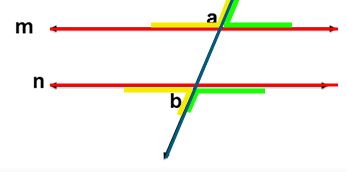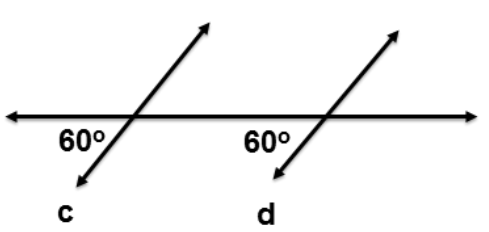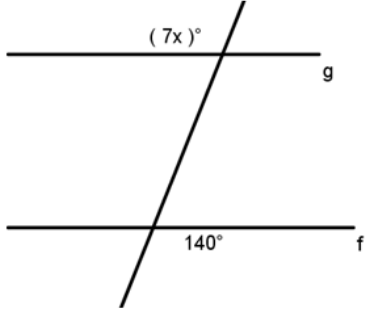Proving Lines are Parallel
It is amazing how you can use the measures of angles to determine if lines are parallel.

Vocabulary
- transversal
- interior angles
- exterior angles
- corresponding angles
- alternate interior
- alternate exterior
- same side interior
- same side exterior
In the last lesson we learned relationships about certain pairs of angles when two parallel lines are cut by a transversal.
This lesson is similar, except we will not be given that the two lines are parallel but instead we will be asked to prove if the two lines are parallel or not parallel based on information that is provided.
Alternate Exterior Angles Converse Theorem
First, let's look at information that will help us determine if the lines are parallel. We are going to use the converse of the theorems we learned from the lsat lesson.
Alternate Exterior Angles Converse Theorem states that if two lines are cut by a transversal and the alternate exterior angles are congruent, then the two lines are parallel.
If ∠a ≅ ∠b then m||n.
Alternate Interior Angles Converse Theorem
Alternate Interior Angles Converse Theorem states that if two lines are cut by a transversal and the alternate interior angles are congruent, then the two lines are parallel.
If ∠a ≅ ∠b then m||n.
Corresponding Angles Converse Theorem
Corresponding Angles Converse Theorem states that if two lines are cut by a transversal and the corresponding inter angles are congruent, then the two lines are parallel.
If ∠a ≅ ∠b then m||n.
Converse Theorems
Remember that if the following angles are congruent, then the two lines are parallel:
Alternate interior angles
Alternate exterior angles
Corresponding angles
Also, if the following angles are supplementary, then the two lines are parallel.
- Same side interior
- Same side exterior
These are all converse theorems from the last lesson. Have these written in your notes.
Same Side Interior Angles Converse Theorem
Same Side Interior Angles Converse Theorem states that if two lines are cut by a transversal and the same side interior angles are supplementary, then the two lines are parallel.
If ∠a is supplemetary to ∠b then m||n
Same Side Exterior Angles Converse Theorem
Same Side Exterior Angles Converse Theorem states that if two lines are cut by a transversal and the same side exterior angles are supplementary, then the two lines are parallel.
If ∠a is supplemetary to ∠b then m||n
Example #1
Here is an example showing how to use this information. Are lines c and d parallel?
Solution: First identify the relationship of the pair of angles that have given information. In the diagram, the angles that have a measure of 60° are corresponding angles. Are the lines parallel?
Answer: Yes, lines c and d are parallel because corresponding angles are congruent.
Answers
Yes or No will not be sufficient answers to these problems. Each answer has to be given a reason.
If the previous example had this information instead your answer would be: Lines m and n are not parallel because the corresponding angles are not congruent.
Example #2
Are lines f and g parallel?
Solution: Again, first identify the relationship of the angles that have given information. In the problem, angles 130° and 50° are same side exterior angles. Are the lines parallel?
Answer: Yes, lines f and g are parallel because same side exterior angles are supplementary.
Example #3
What would the value of x have to be for the lines f and g to be parallel?
Solution: Again, first identify the relationship of the angles that have given information. In the problem, angles 140° and 7(x) are alterior exterior angles so they must be congruent for the lines to be parallel.
7x = ___
Answer: 140
x = ___
Answer: 20





